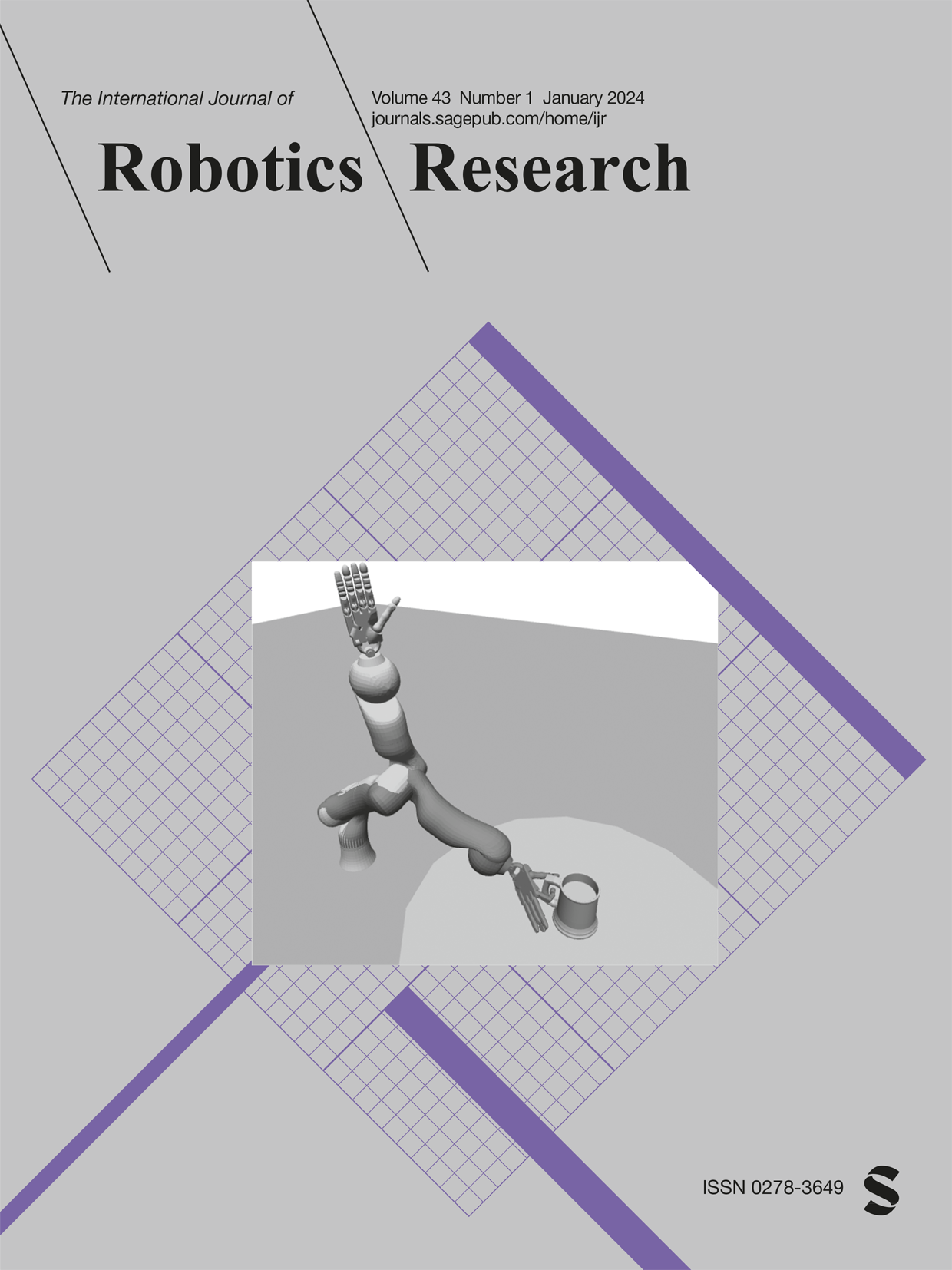反应性和状态性:基于行动的传感器、计划和必要状态
IF 5
1区 计算机科学
Q1 ROBOTICS
引用次数: 1
摘要
对于机器人专家来说,计划通常是其他工作的结果,是实现某个问题定义的目的的合成对象;作为计划的计划很少被视为一流的研究对象。计划指定功能:计划可以被视为定义机器人在整个执行过程中的行为。这为机器人设计的许多其他方面提供了信息和启示,包括:必要的传感器和动作选择、历史、状态、任务结构以及如何定义进度。询问一组计划有助于理解不同的执行方式如何影响这些不同方面之间的相互关系。回顾Erdmann的基于动作的传感器理论,这是一种表征基本信息需求的经典方法,我们展示了计划(在指定行为的作用中)如何影响感知需求。使用枚举计划的算法,我们研究了如何通过识别和处理排除存在基于动作的传感器的特征,将一些不存在基于动作传感器的计划转换为传感器集。我们不知道之前已经确定的那些阻碍特征。基于行动的传感器可以被视为独立的反应计划;我们通过格结构将它们与所有可能的计划集合联系起来。这个网格揭示了带有基于动作的传感器和不带有传感器的计划之间的界限。有些计划,特别是那些不是反应性计划并需要某种内部状态概念的计划,永远不可能有相关的基于行动的传感器。即便如此,基于行动的传感器可以作为一个框架来探索和解释这些计划如何利用状态。本文章由计算机程序翻译,如有差异,请以英文原文为准。
Reactivity and statefulness: Action-based sensors, plans, and necessary state
Typically to a roboticist, a plan is the outcome of other work, a synthesized object that realizes ends defined by some problem; plans qua plans are seldom treated as first-class objects of study. Plans designate functionality: a plan can be viewed as defining a robot’s behavior throughout its execution. This informs and reveals many other aspects of the robot’s design, including: necessary sensors and action choices, history, state, task structure, and how to define progress. Interrogating sets of plans helps in comprehending the ways in which differing executions influence the interrelationships between these various aspects. Revisiting Erdmann’s theory of action-based sensors, a classical approach for characterizing fundamental information requirements, we show how plans (in their role of designating behavior) influence sensing requirements. Using an algorithm for enumerating plans, we examine how some plans for which no action-based sensor exists can be transformed into sets of sensors through the identification and handling of features that preclude the existence of action-based sensors. We are not aware of those obstructing features having been previously identified. Action-based sensors may be treated as standalone reactive plans; we relate them to the set of all possible plans through a lattice structure. This lattice reveals a boundary between plans with action-based sensors and those without. Some plans, specifically those that are not reactive plans and require some notion of internal state, can never have associated action-based sensors. Even so, action-based sensors can serve as a framework to explore and interpret how such plans make use of state.
求助全文
通过发布文献求助,成功后即可免费获取论文全文。
去求助
来源期刊
CiteScore
22.20
自引率
0.00%
发文量
34
审稿时长
6-12 weeks
期刊介绍:
The International Journal of Robotics Research (IJRR) has been a leading peer-reviewed publication in the field for over two decades. It holds the distinction of being the first scholarly journal dedicated to robotics research.
IJRR presents cutting-edge and thought-provoking original research papers, articles, and reviews that delve into groundbreaking trends, technical advancements, and theoretical developments in robotics. Renowned scholars and practitioners contribute to its content, offering their expertise and insights. This journal covers a wide range of topics, going beyond narrow technical advancements to encompass various aspects of robotics.
The primary aim of IJRR is to publish work that has lasting value for the scientific and technological advancement of the field. Only original, robust, and practical research that can serve as a foundation for further progress is considered for publication. The focus is on producing content that will remain valuable and relevant over time.
In summary, IJRR stands as a prestigious publication that drives innovation and knowledge in robotics research.

 求助内容:
求助内容: 应助结果提醒方式:
应助结果提醒方式:


